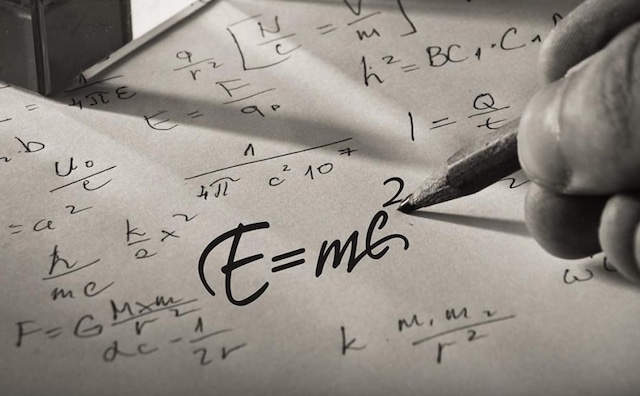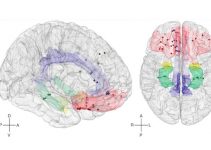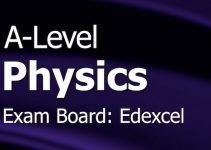When people talk of the theory of relativity, the first person that comes to their mind is German physicist Albert Einstein. This is because Einstein developed the modern Special Theory of Relativity and the General Theory of Relativity. But long before Einstein was born, Galileo and Newton had developed the philosophy of classical relativity, and Einstein only built on what they had done to obtain a more measurable and proven theory.
Relativity is the idea that time and space are relative and not absolute concepts, and dependent on other factors for precision.
In a paper titled On the Electrodynamics of Moving Bodies and published on September 26, 1905, Einstein proposed the concept of Special Relativity. In his theory, the physicist proposed that the laws of physics are the same in all stationary frames of reference that have no acceleration; and that the speed of light in a vacuum is identical for all observers regardless of the motion of the observer or source of light.

Best Books on Special Theory of Relativity: Our Top Picks
So if you are interested in knowing the possibility of traveling to distant space in record time, you should acquire the best books on the Special Theory of Relativity. They were handpicked by our team of editors to help you excel as a student or professor of physics with a special interest in relativism with time and space. Here they are – specially curated for you:
1. Einstein’s Theory of Relativity
Imagine reading a book written by a 1955 Nobel Laureate on the works of Albert Einstein himself. Max Born remains one of the greatest physicists in the world after Einstein, and his book examines the works of Einstein in a more comprehensive and updated manner. Using plain illustrations and simple experiments that can be duplicated, Born simplifies Einstein’s theory of relativity in a form that high school students of algebra will understand.
Since Einstein builds on classical relativity postulated by Galileo and Newton, Born’s book examines the classical theory of the subject in the light of modern physics developed by Einstein. He covered almost all aspects of Einstein’s work on relativity and other areas of physics that have a bearing on the subject. Students and professors would benefit greatly from this intellectual and practical resource.
To this extent, this revolutionary book examined core aspects of modern-era relativity such as space and time measurements, geometric axioms, Ptolemaic and Copernican astronomy, equilibrium and force, laws of motion, inertia, mass, momentum and energy, Newtonian’s gravitation, celestial mechanics, centrifugal forces, and absolute space, laws of optics as they relate to the speed of light, wave theory, Doppler effect, and electrodynamics as they relate to magnetic induction, electromagnetic theory of light, electromagnetic laws of moving bodies, and the contraction hypothesis.
- Author(s): Max Born
- Publisher: Dover Publications
- Current Edition: Revised Edition (June 1962)
- Pages: 400
2. Relativity – the Special and General Theory
This book was originally written in German by Albert Einstein himself in 1916, but translated into English by Robert W. Lawson in 1920. It covers Special Relativity in the first part, General Relativity in the second part, and an analysis of our entire universe in the third part. It is written for laymen who have a keen interest in understanding the philosophical and scientific theories behind the natural dynamics of our world.
It is written in a simple language for laymen and specialists and designed as reference material with profound truths that stand the test of time. It provides readers with a concise knowledge of our universe and the natural laws that govern them. This is one book that students of physics and laymen interested in learning about our universe should have, and those in academics will also find it invaluable.
- Author(s): Albert Einstein and Robert W. Lawson
- Publisher: Independently published
- Current Edition: July 2021
- Pages: 66
3. Special Relativity and Classical Field Theory: The Theoretical Minimum
When professors of theoretical physics collaborate to write a book on special and classical theories of relativity, the end result will be an academic resource that is invaluable for understanding our universe. From the authors of Quantum Mechanics and The Theoretical Minimum among other related books comes the Special Relativity and Classical Field Theory: The Theoretical Minimum.
Leonard Susskind is a celebrated physicist while Art Friedman is a data engineer and consultant. Their latest book analyzes Einstein’s work on special relativity as well as Maxwell’s work on classical field theory. This book pays special attention to electromagnetism, force, inertia, mass, particles, and waves among other aspects of theoretical physics. Complete with detailed illustrations and spectacular drawings, it teaches the fundamentals of special relativity in a manner that everyone can understand.
- Author(s): Leonard Susskind and Art Friedman
- Publisher: Basic Books
- Current Edition: Reprint Edition (May 2019)
- Pages: 448
4. Introduction to Special Relativity (Dover Books on Physics)
If you are sincerely interested in understanding how Albert Einstein resolved the inconsistencies that existed between Newton’s theory of mechanics and Maxwell’s theory of electromagnetism, then you must acquire this book. Written in plain language to x-ray Einstein’s theoretical postulations on universal time and space, this Introduction to Special Relativity is all you require to understand the modern laws that govern our world.
It covers subjects on classical relativity and the relativity postulate, time dilation, the twin paradox, momentum and energy, particles of zero mass, electric and magnetic fields and forces, and more. Anyone with a basic knowledge of algebra would understand the coverage of these topics with little assistance, and it is invaluable for students of physics and those with a special interest in the Theory of Relativity.
- Author(s): James H. Smith
- Publisher: Dover Publications
- Current Edition: Dover Edition (December 2015)
- Pages: 240
5. The Einstein Theory of Relativity: A Trip to the Fourth Dimension
Here is what one reader has to say about this book: “If you know high-school math, are not afraid of equations, and want to find out what Einstein really said, read Lillian Lieber’s book. She will lead you through special and general relativity, helping you at every step to understand the essential equations, including tensors, with amazing clarity and conciseness.” This testimony was given by Peter Pesic, the author of Abel’s Proof: An Essay on the Sources and Meaning of Mathematical Unsolvability.
The above testimony is all the more important to understand Lillian R. Lieber’s The Einstein Theory of Relativity: A Trip to the Fourth Dimension. A core mathematician, few people understand Einstein’s theory of relativity like Lieber. Her book opens your eyes to the fascination of time in nature, gravity, and space. This book is vividly illustrated by Lieber’s husband, Hugh Gray Lieber, and the illustrations provide a charming lightness and pictorial quality to the book.
- Author(s): Lillian R. Lieber
- Publisher: Paul Dry Books
- Current Edition: Illustrated Edition (October 2008)
- Pages: 350
6. The Special Theory of Relativity: An Introduction (Essentials of Physics Series)
Available in Kindle format, this book analyzes the special theory of relativity in the geometry of space and time. It is very user-friendly with detailed expositions on the historical contexts that exist between classical and modern-era theories of relativity. It also covers the links between mathematics and physics with a special focus on Einstein’s Special Theory of Relativity.
This book has 24 chapters devoted to special relativity, special relativity in physics, space, physical constraints, numbers, matrices, finite groups, trigonometric functions, vectors, velocity, simultaneity, Lorentz transformation, straight lines and the twin paradox, momentum, and relativistic mass, electromagnetism, quaternions, dimensional space-time, the expanding universe, and cosmic background radiation.
This Special Theory of Relativity: An Introduction was written by a celebrated researcher who has spent over 20 years investigating the nature of empty space and time with a special focus on theoretical physics. He is also an authority on finite group spaces as well as higher dimensional algebras of empty spaces. His book is a great resource for students of physics and professionals who have a special interest in the theory of relativity.
- Author(s): Dennis Morris
- Publisher: Mercury Learning and Information
- Current Edition: July 2016
- Pages: 316
Final Thoughts
The books highlighted above were specially handpicked to provide you with comprehensive and illustrated knowledge of our near and distant universe. They contain simplified theories on the natural laws that govern our universe as well as how those laws interact to yield what we see and experience in our world. If you are interested in mathematics, physics, our solar system, and deep space, then these books are recommended for your use. They contain numerous illustrations, photographs, and images as well as mathematical concepts that underscore how our universe works.
The books are suitable for undergraduate and graduate students of physics as well as academic professors. They are also invaluable to laymen who wish to understand our universe better with a view to knowing the interaction between time and space from the position of an observer. They also contain insights into what made Einstein tick and the fundamental basis of his work since the early 1900s. These are resource materials that can be archived, gifted to loved ones with an interest in our universe, and used as references for academic knowledge and career pursuits.





